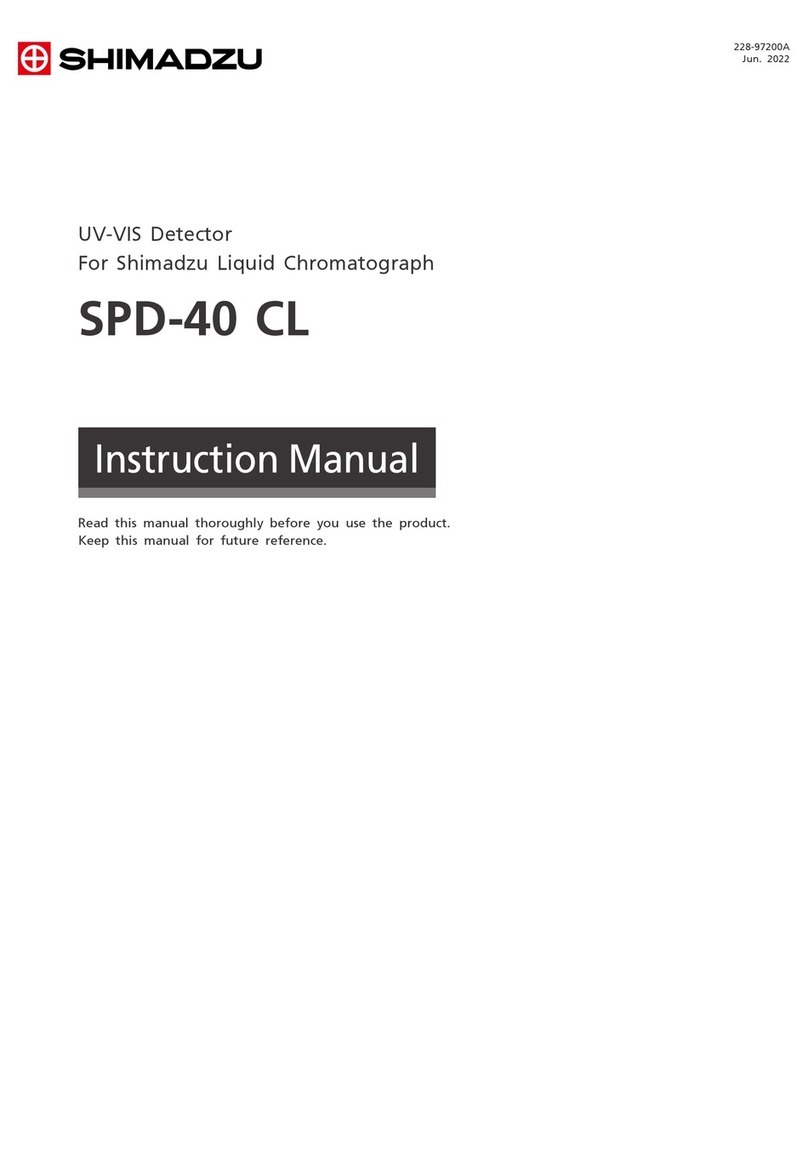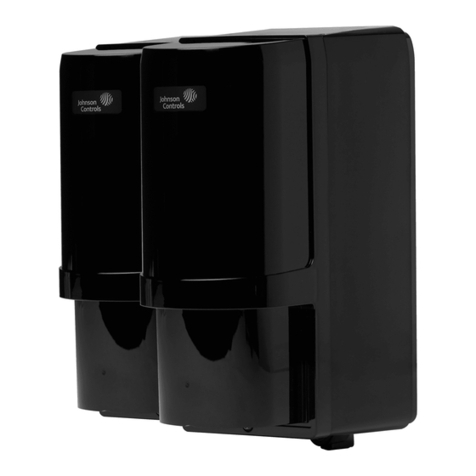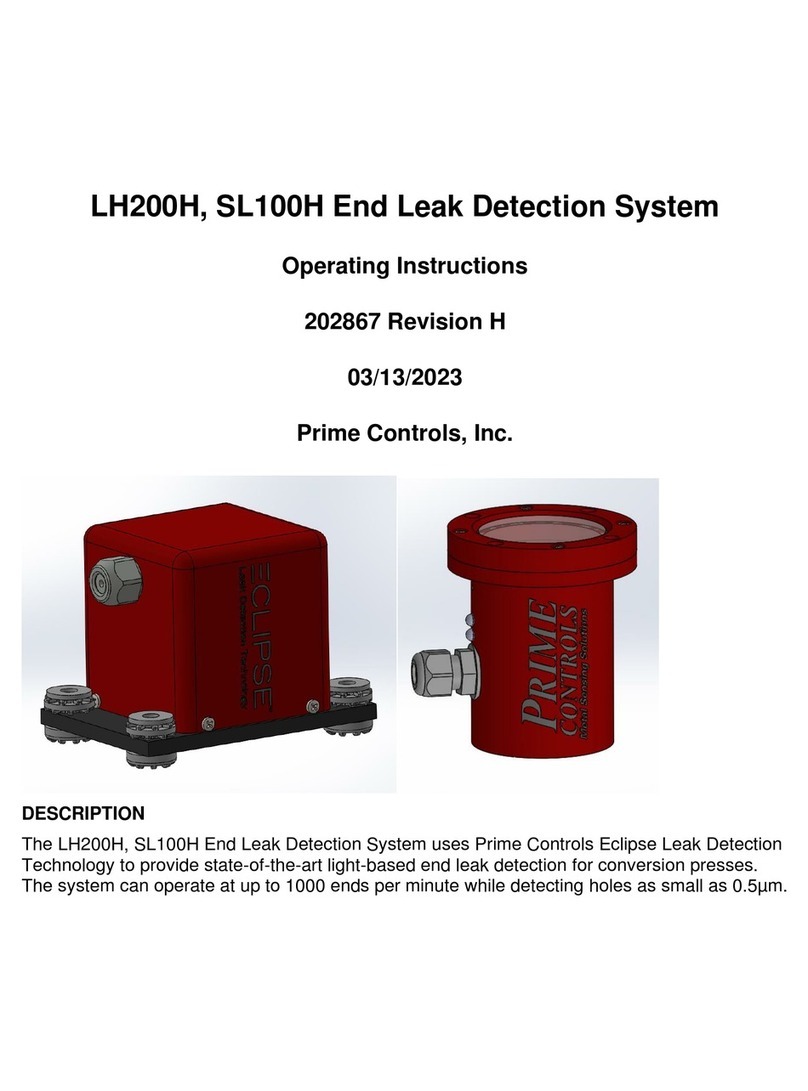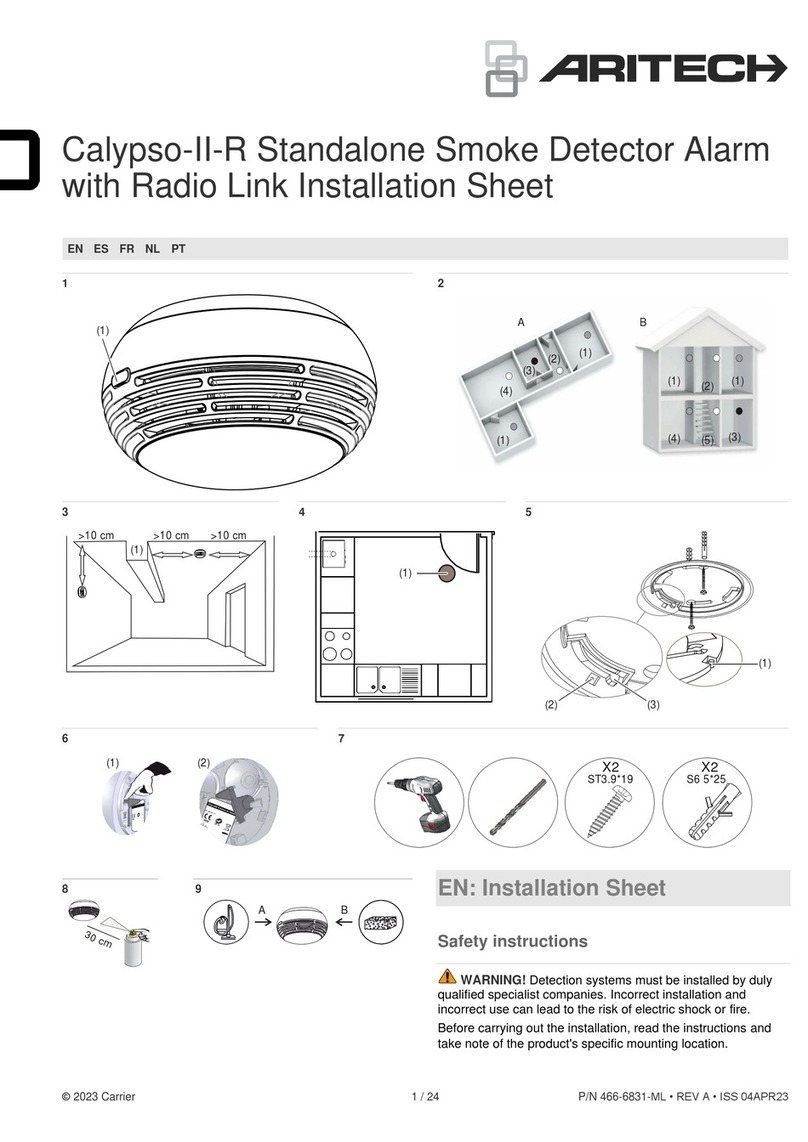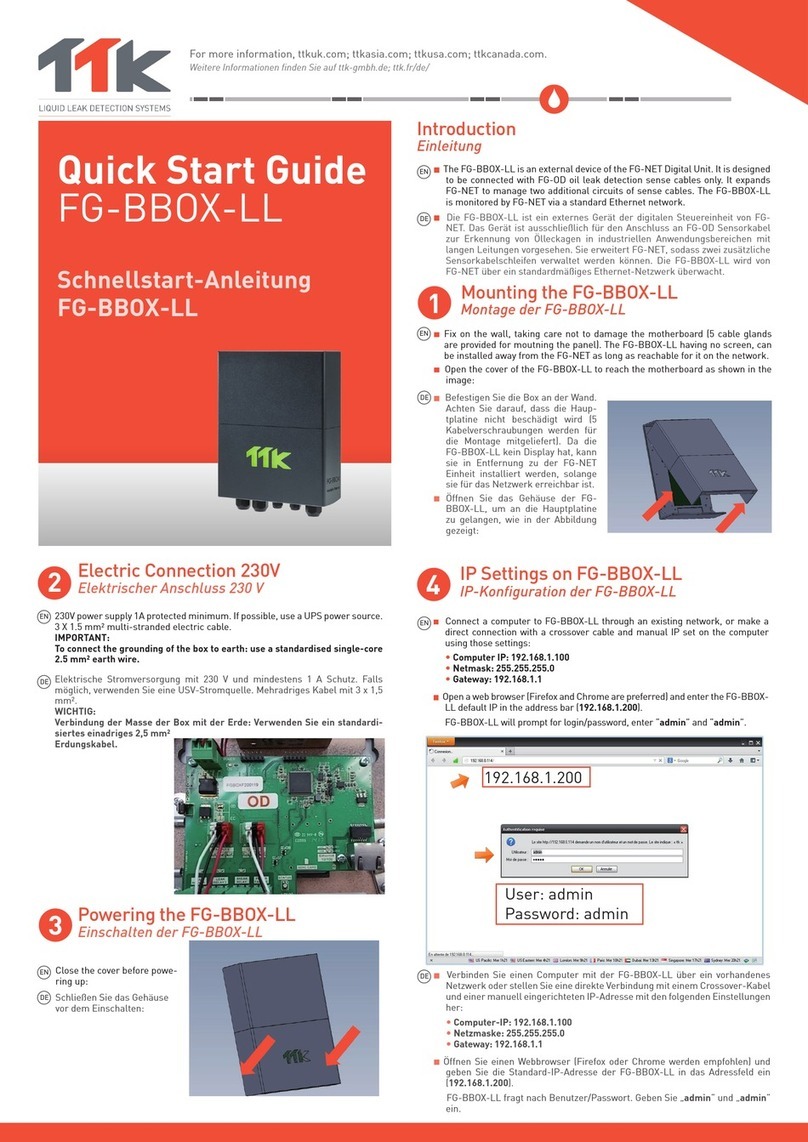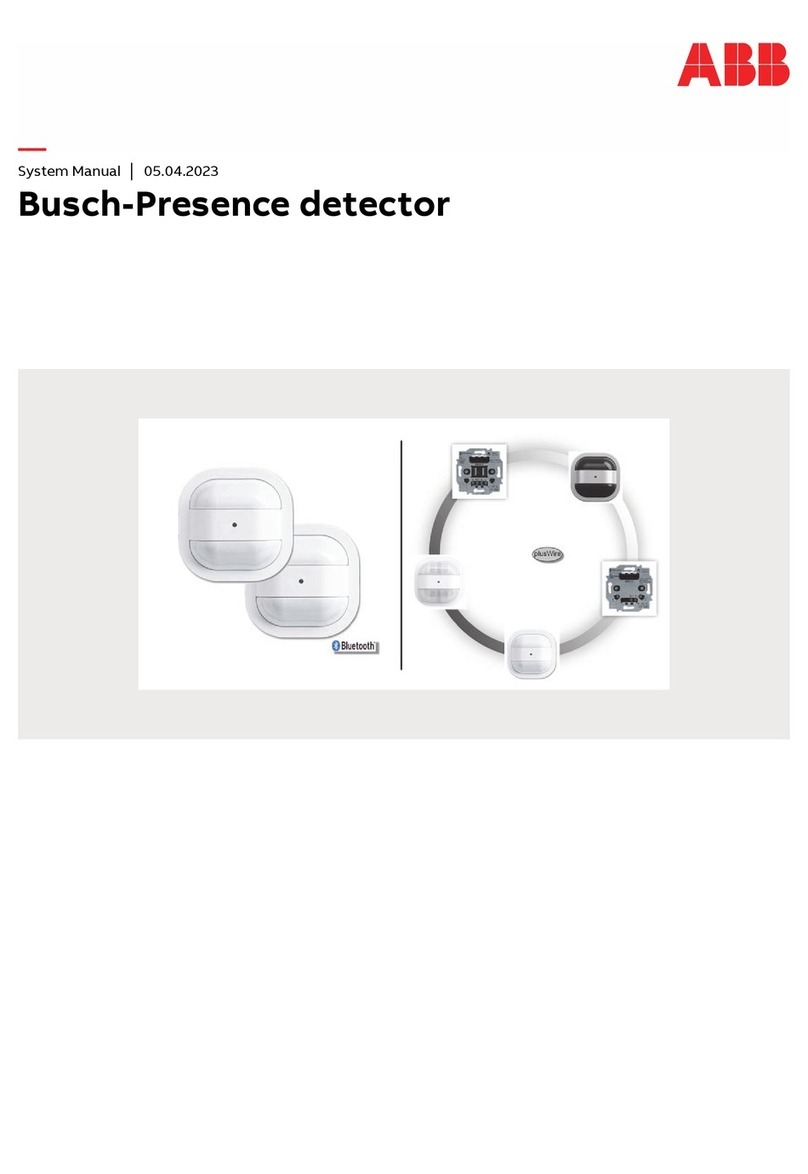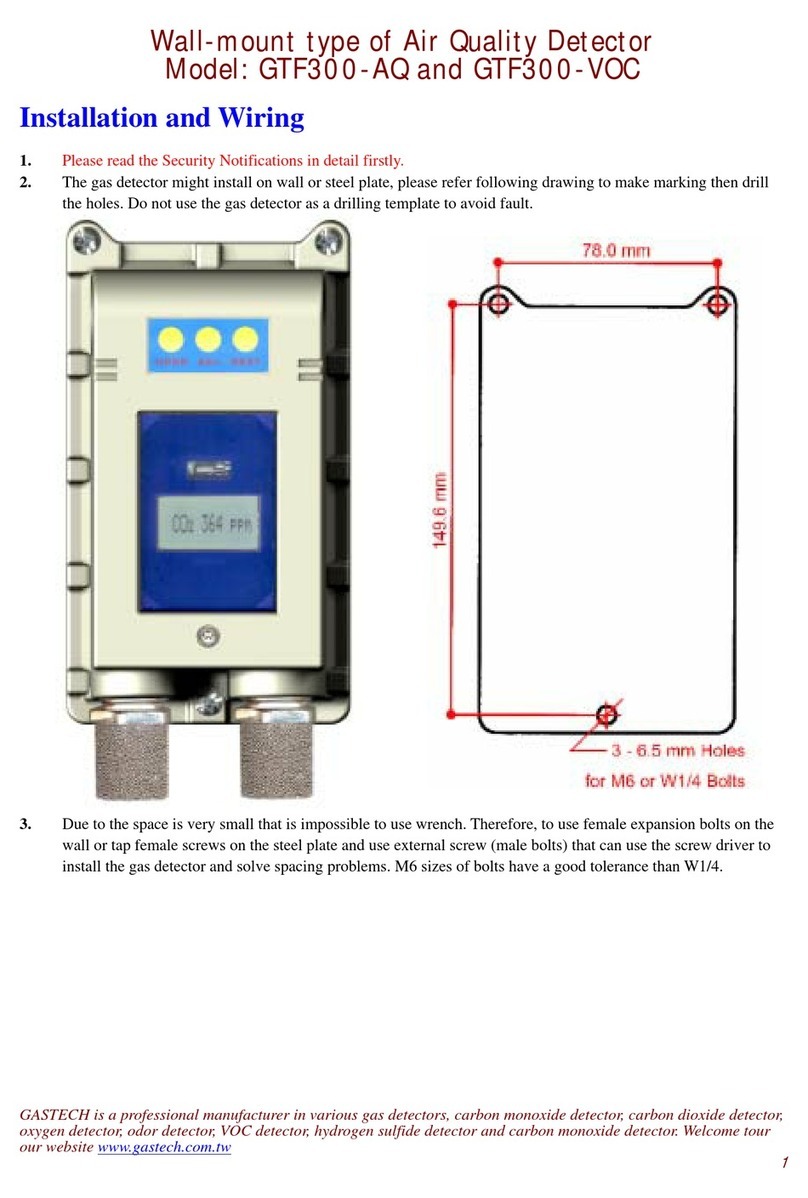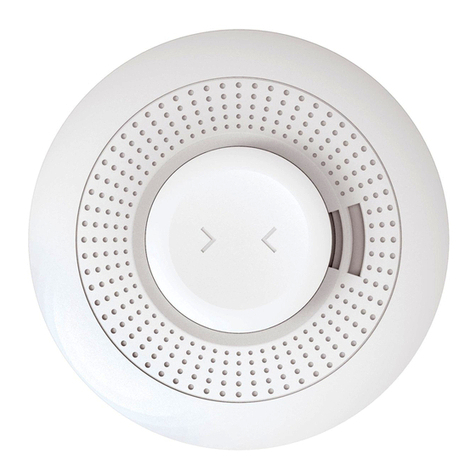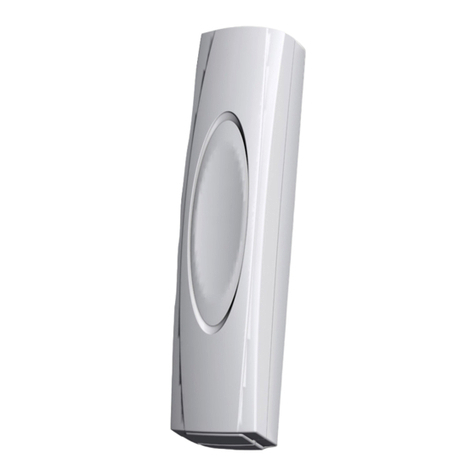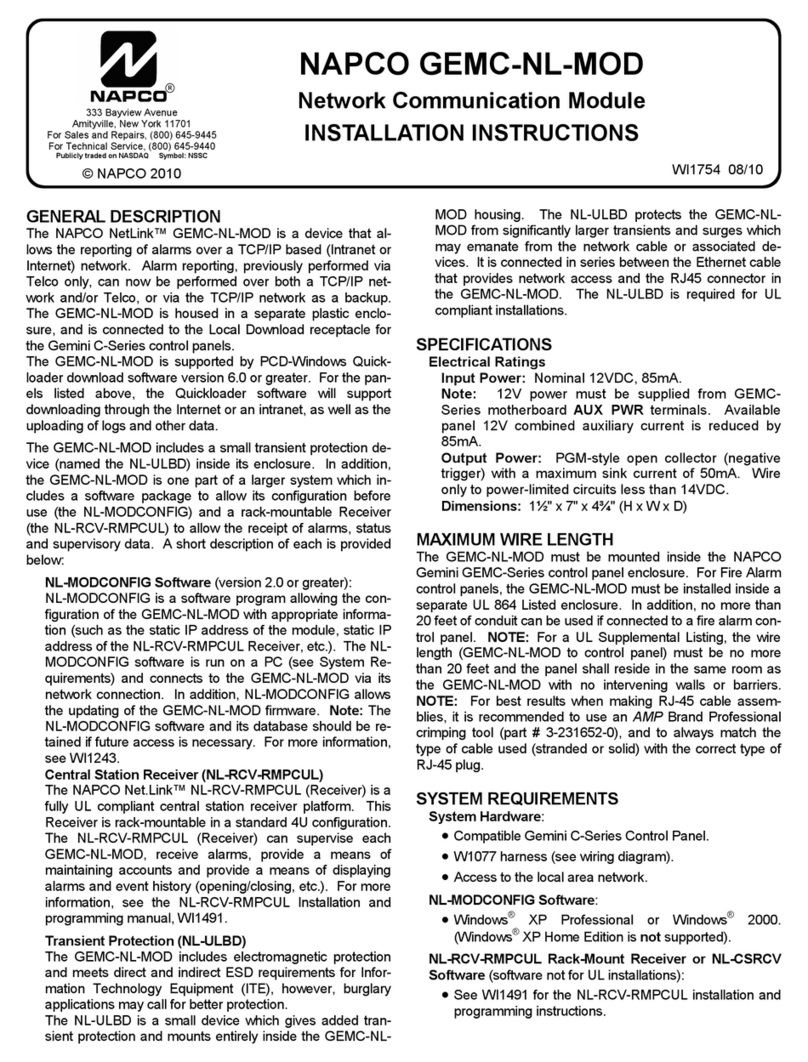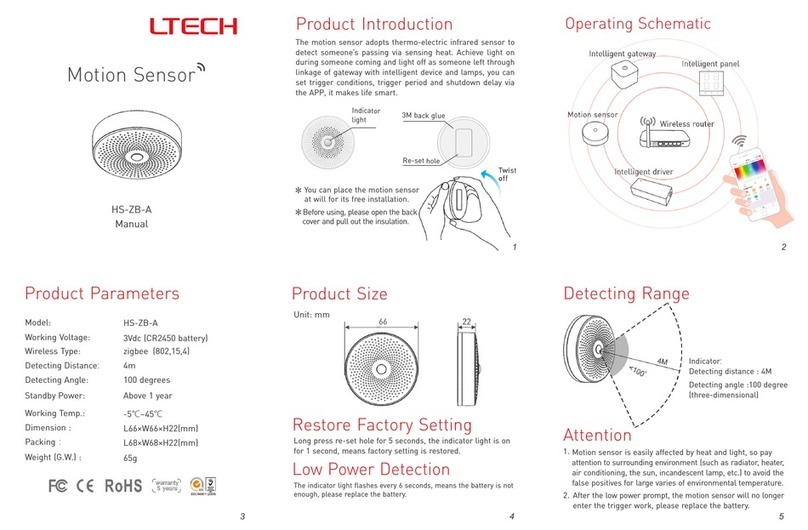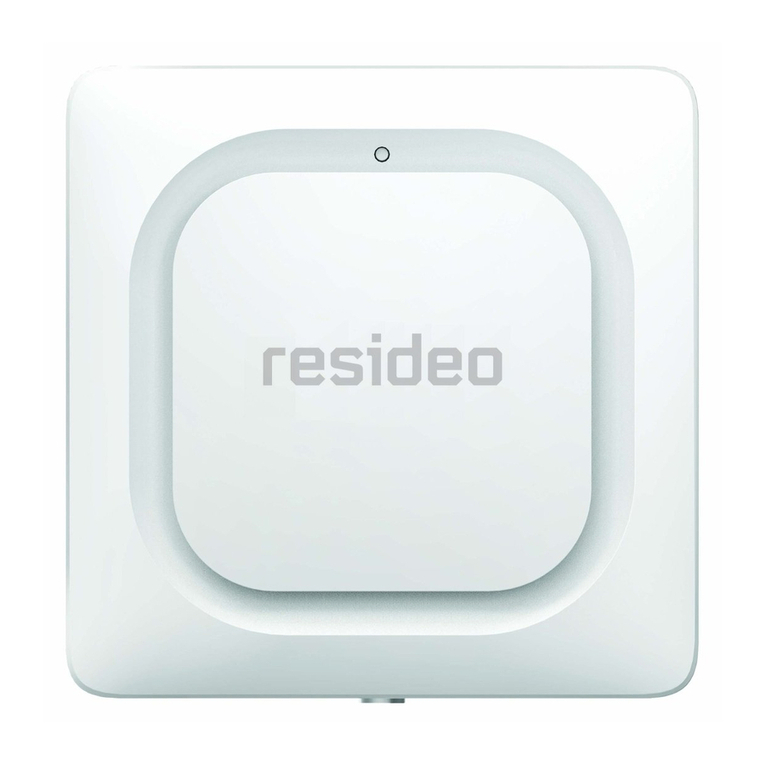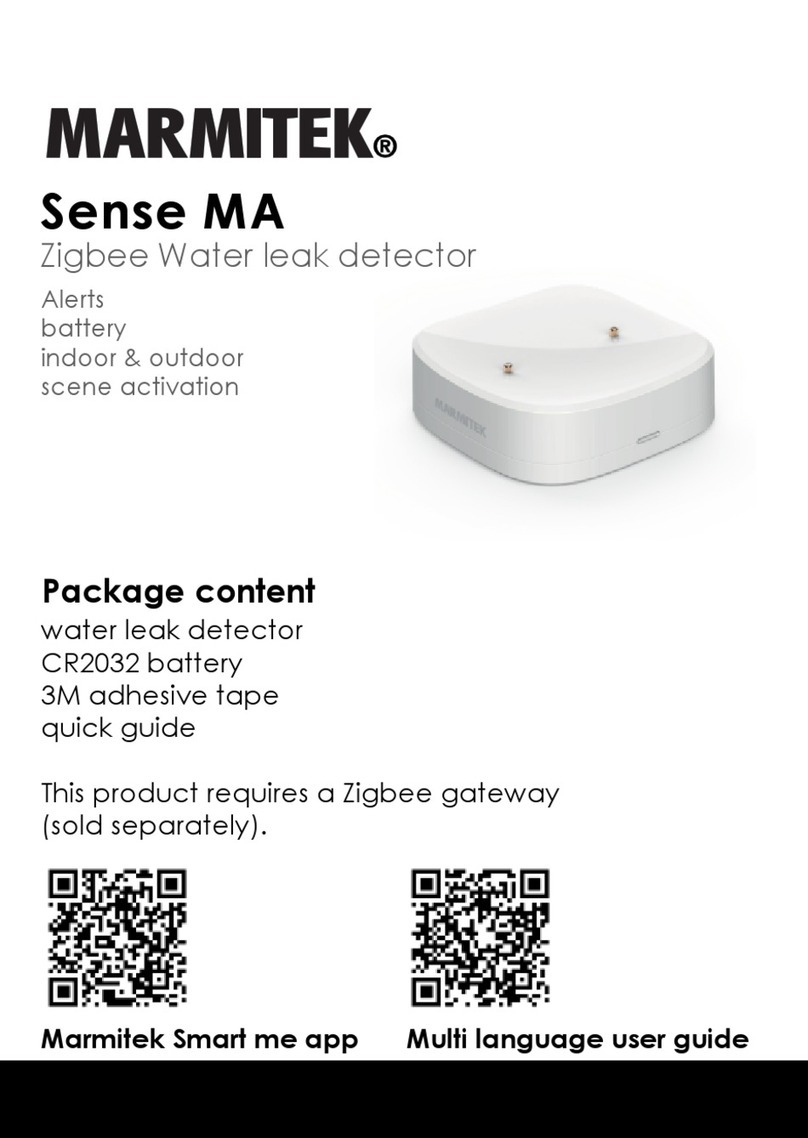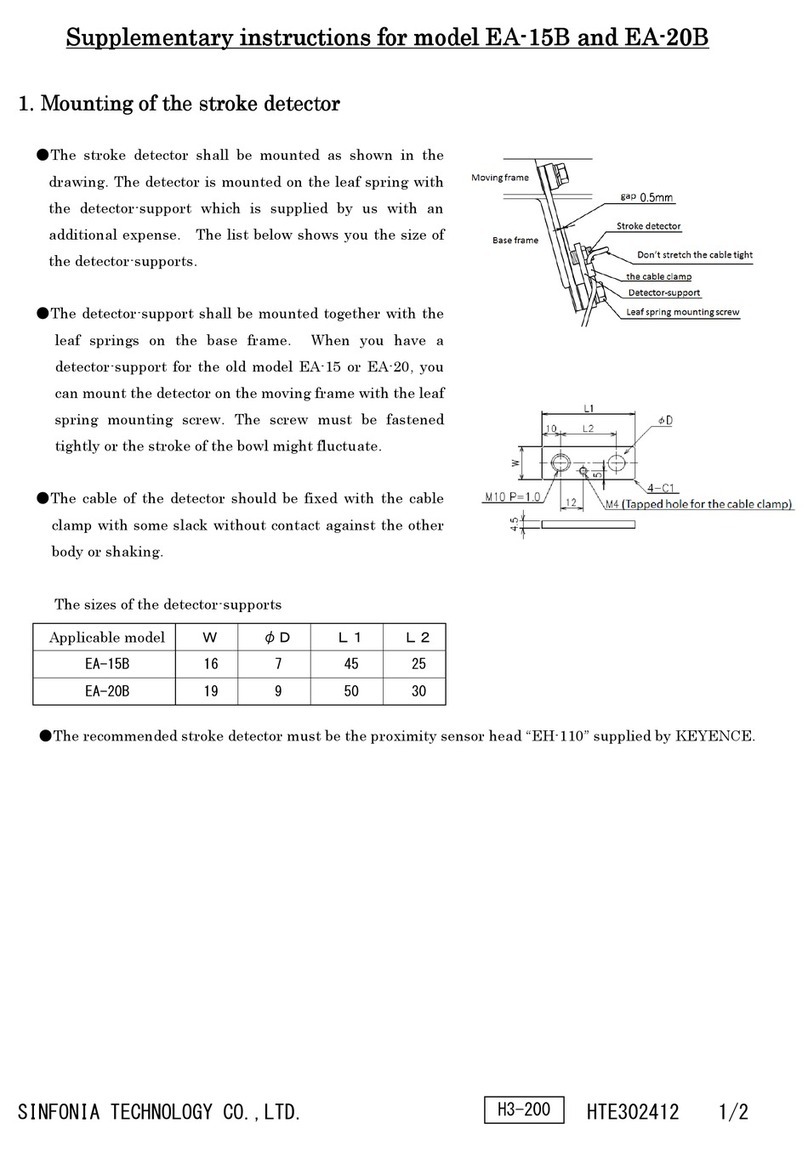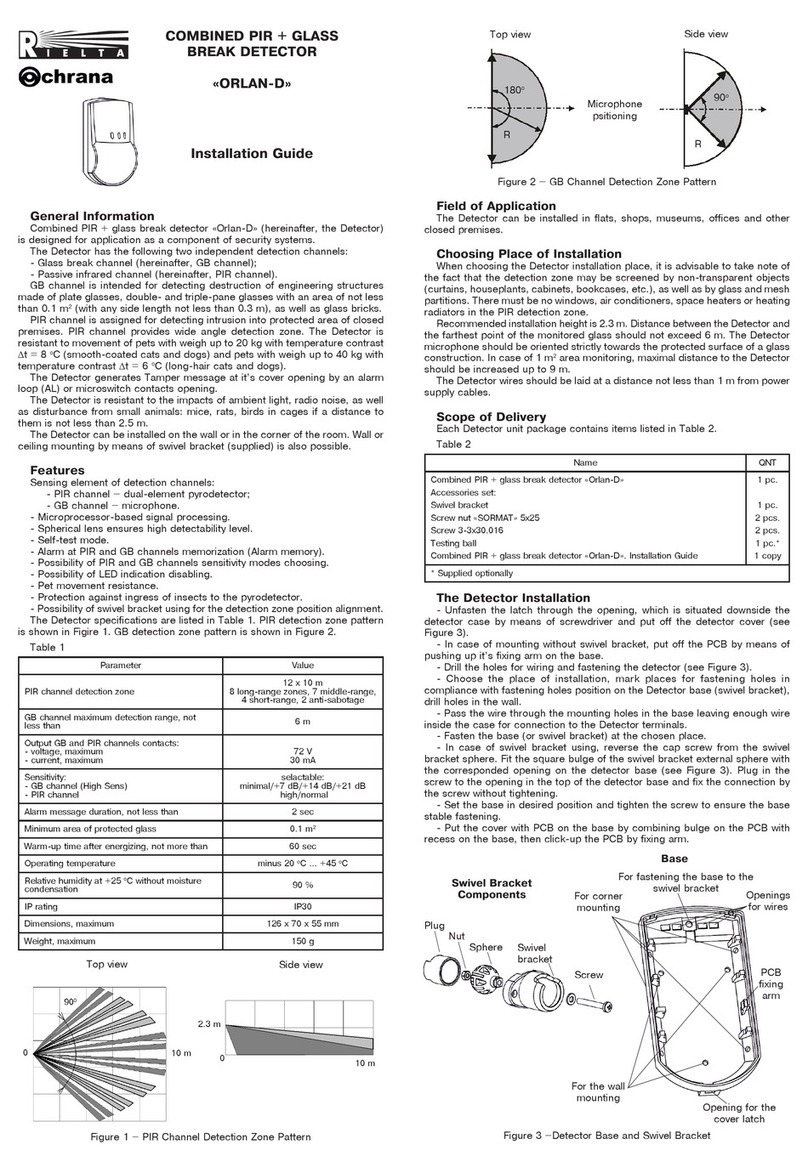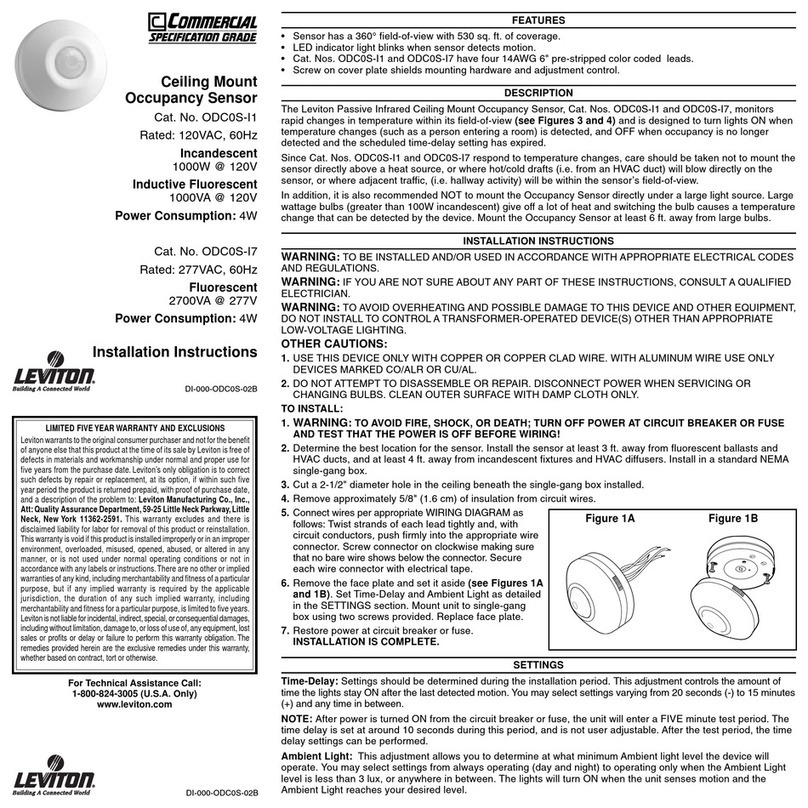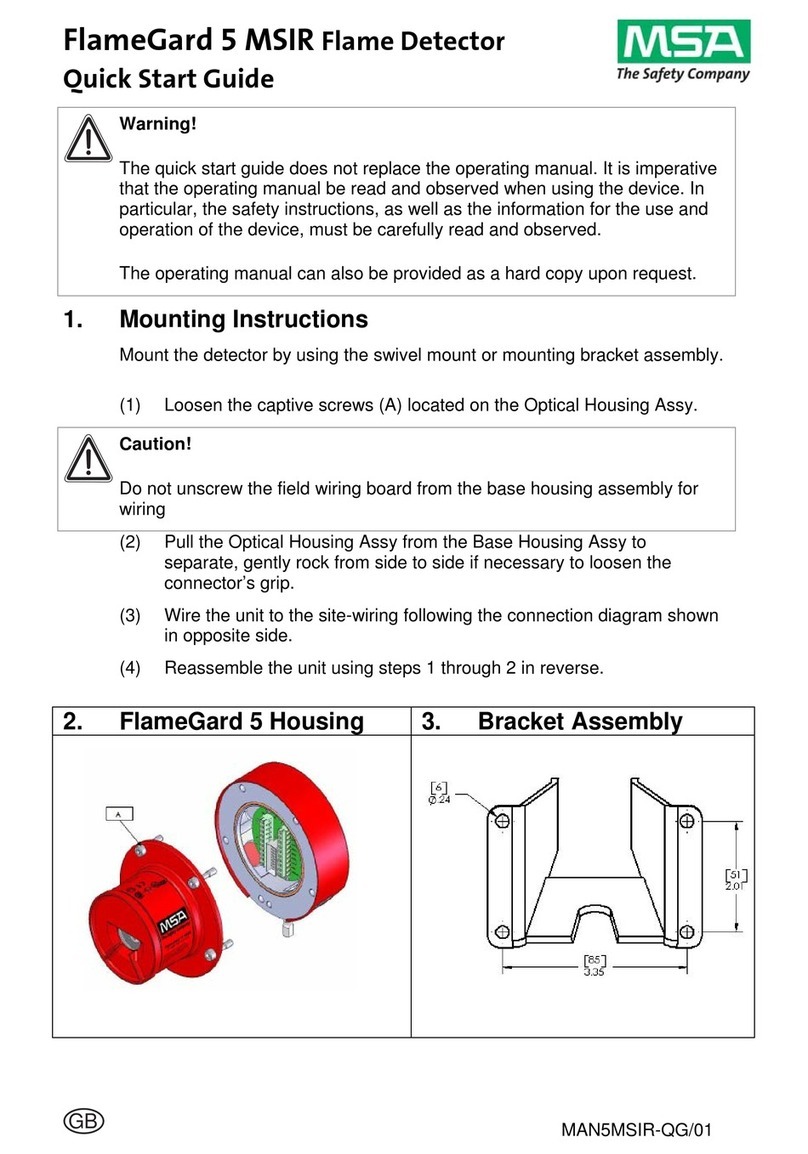Shimadzu RID-10A User manual

228
-
30179
DIFFERENTIAL REFRACTIVE DETECTOR
RID
-
1
OA
FOR
SHIMADZU
HIGH
-
PERFORMANCE
LIQUID
CHROMATOGRAPH
USER’S
MANUAL
Read the instruction manual thoroughly before you use the product. Keep
this
instruction
manual
with care
so
that you can use it any time you need it.
SHIMADZU
CORPORATION
CHROMATOGRAPHIC
&
SPECTROPHOTOMETRIC
INSTRUMENTS DIVISION
KYOTO,
3APAN

Copyright
0
Shimadzu Corporation
1995.
.
All rights are reserved, including those to reproduce
this
publication or
parts
thereof in any
form without permission in writing from Shimadzu Corporation.
Information in this publication is subject to change without notice and does not represent
a
commitment on the part of the vendor.
Any errors or omissions which may have occurred in this publication despite the utmost care
taken in its production will be corrected
as
soon
as
possible, but not necessarily immediately
upon detection.
Note that Shimadzu does not have any obligation concerning the effects resulting from the
application of the contentsof this manual.
MS, MS
-
DOS, Microsoft and Visual Basic are registerd trademarks, and Windows is
a
trademark of Microsoft Corporation
in
the USA.
IBM is
a
registerd trademark
of
InternationalBusiness Machines Corporationin the USA.
TrueType
is
a
registerd trademark of Apple Computer, Inc in the USA.

The
RID
-
1
OA
is the differential refractive index detector for the high
-
performance liquid
chromatograph.
In
orderto operate the unit safely, strictly observe the following points.
1.
Do
not
use
the unit for any purpose otherthan the above mentioned analysis.
2.
Follow the procedures described in the instructionmanual.
3.
Observe the warnings and cautions.
4.
Do
not disassemble
or
modify the unit without approval
from
Shimadzu. Failing to do
so
may lead to a dangerous situation or damage of the unit.
5.
For internal repair of the product, contactyour Shimadzu ServiceRepresentative.
6.
The pink
-
color pages and the meshed parts are for our service engineers, and are not
intended for our clients.
Do
not attempt installation of the instruments
as
serious damage
could result.
WARNING IN
THE
INSTRUCTIONMANUAL
This instructionstipulates the content of warnings as follows:
-1
Applied ina case that could result indeath or serious injury.
-1
Applied in a case that could result in slight injury or physical
damage.
-1
Applied for improvement of operating efficiency or help in
understanding.
I

For safety
of
operation,this unit is provided with
the
A
mark
at the portion where special
When operating the
parts
where
this
mark
is
indicated, exercise
special
caution
after
reading
cautions are required.
the
manual.
Replacement
of
fuses
This
unit uses the
following
fuse. Be sure to replace the fuse
of
same
type
and
capacity.
Rated voltage
:
100-24OV
Part
N
O
.
072
-
01652
-
23 250V 5AT
I
CAUTION
I
Do
not bend the optical cable forremote controlwith the radius
of
35mm
or less.
Bending it with the radius smaller than 35mm may damage the cable, whith may cause
malfunction
of
the
unit.

m
VAOS
I
AOX-022
VAOSI
A02
I
96-000ZE-822
26-0002€-822
VAOS
I
hpedea
A001
16-000Zf-822
a3NlOS
JaMOd
'ON
lred

8.
Solvent
not
usable
HFIPA
(Hexafluoroisopropyl alcohol) affects the materials used in the flow path and
deteriorate the strength of the material. In the worst case, pipe may explode and high
-
pressure solvent scatters.
As
it is very dangerous,never
use
HFIPA.
9.
Others
The equipment should not be exposed to direct sunlight or strong air currents.
It
is
also
recommended to install in
a
room where temperature fluctuation
is
small.
N

Liquid chromatography using flammable organic solvents as mobile phase requires proper care
against
fire,
explosion, etc. Pakcularly, among various possible accidents,those caused by static
electricity are difficult to anticipate, and tend to occur only with unexpected conditions which
often make countermeasuresinsufficient.
At a site where preparative liquid chromatography is practiced, a large amount of flammable
substances may be used. Therefore, once an accident happens, it could lead to tremendous
damage.
The mechanism of accident caused by static electrical discharge and preventive measures are
describedbelow. Take due care in safety measures in handling of equipment.
1.
Mechanism
of
Static ElectricalDischargeAccident (Example)
Accidents caused by static electricity take place through the following processes.
When liquid is fed at high speed through a small
-
diameter
tube like the pipe of a liquid chromatograph, static electrical
charge occurs by frictionbetween solid and liquid
as
shown in
Fig.
1.
Occurrence
of
Static
Electricity
1
$
-
Flowing liquid
A
Solid
body
A
:
Electric charge
movingwith
flowing liquid
B
:
Electric charge
being fixed
to
the
solid surface.
Fig.
1
Occurrence
of
Static Electricityby Friction betweenSolidand Liquid
Chargingand storage
of
static electricity
t
1
Energy release by
1
I
discharge
I
3.
Ignition
of
combustible
substances
f
When the charged liquid is collected in an insulated vessel,
the static charge accumulates gradually, and the voltage can
easily reach
a
few kilovolts.
If
some other conductive object
is
brought near the vessel,
electricity is discharged at a certain distance from the vessel
releasingheat energy.
If flammable gas of sufficient concentration exists nearby,
ignition iscaused by this energy.

If
air drv
\
Liquidisflowing at high
speed
througha
small
diametertube.
*Chargeiseasily accumulatedif
bubblesare includedinthe liquid.
Insulatedvessel
(likepolyethylene)
Spark discharge
-
””;”oyc
I
Ill
/
Inflammablegas isstored inthe
headspace
of
thevessel.
(\
n\
Inflammableorganic solvent is
charged
to
agreatextent.
e
-
-
-
-
Floorcovered
with
rubber, etc.,
providesunwantedinsulation.
Fig.
2
Conditionswhich may cause Accidents
2.
PreventiveMeasuresagainstAccidents
The principal preventive measure is the prevention of “charging and storage of static
electricity” among those items shown in “Mechanism
of
Static Electrical Discharge
Accident.” The preventive measures are shown below. It is recommended to exercise two
ormore measures simultaneously.
3K
Particularly when a large quantity of flammable solvent is held in a large vessel,
be
sure
to observethe preventivemeasures
1,2,
and
3.
Preventive measure
1.
Use metallic (conductive) waste liquid vessel which is well grounded.
This
releases the
charge of the waste liquid and vessel to ground.
The followingitems areavailable.
(1)
Grounding
wire
with clip P/N
228
-
21353
-
91
(2)
Metallic
18
liter can
P/N
038
-
00044
(3)
Metallic
4
litercan
P/N
038
-
00043
-
01
3K
+E
Be sure to ground the vessel properly. Disconnecting of grounding wire or poor
grounding defeatthe purpose of using
a
metallicvessel.
There are some metallic cans which have no conductivity
due
to
an
oxidized coating
or lacquer on their surface. Be
sure
to
confirm
the grounding
of
vessels by a tester
before application.
When a liquid with almost no conductivity (of 10-lOs/mor less) is discharged into the
vessel, it isnecessary to
mix
it with another liquid with some conductivity. (The other
liquid can be placed in the vessel
in
advance.)
%

Preventivemeasure
2.
Minimize the clearance
of
both inlet and outlet
of
vessel to prevent flame from entering the
vessel.
(1)
Cap with three holes for
18
liter and
4
liter cans
(P/N
228
-
21
354-91)
is available.
Connect clipto metallic
Minimizeclearance
by
attaching acap. groundthe metallicvessel.
Metallic
18
litter can
(A
platedcan is recommended.)
Static electricity
of
the liquid
is releasedvia vessel.
Fig.
3
Anti
-
Static Electricity Measuresfor Vessel
Preventivemeasure
3.
Do
not approach the vessel with charged objects including the human body.
Charging prevention measures for human body
a)
b) Grounding
of
human body
c) Make working floorconductive
Prevention of charging of shoes and clothes
Suitable products to be used for those measures a), b), and c) are available on the
market.
When persons who use no charge prevention measures approach dangerous sections,
they have to be grounded beforehand. (For example, they should contact grounded
metal by hand.)
%
Preventivemeasure
4.
Use pipes with inner diameter of
2mm
ormore for waste liquid line for large flow rates.
3%
Inclusion
of
bubbles in the
tube
may increase the amount of charging by ten times.
Check that there isno inclusion
of
air
via
tube
joints.

Preventivemeasure
5.
When it is impossibleto use a conductive vessel, use caution in the followingpoints.
a)
Set the vessel
so
that the pipe outlet will be placed below the liquid
level
in the
vessel. Or, dip a grounded metal (ex. pipe connected
to
the main body of device) in
the liquid.
This
method is not effective
for
liquid with small conductivity(10-I0s/m
or
less).
Use
a
vessel
of
the
smallest possible capacity to minimize the damage by
fire
if it
should occur.
Prevent the
room
from
being
dry.
Humidity of
65% or
more has charge prevention
effects.
+E
b)
c)
a

1ChapterlI
General
1.1
Outline
..........................................................................................................
1
-
2
1.2
Features
........................................................................................................
1
-
3
1.3 Principle
of
Measurement
.............................................................................
1
-
4
1.4 Row Schematic
............................................................................................
1
-
6
1
Chapter2
1
PartsList
2.1 Parts and Accessories
...................................................................................
2
-
2
-1
Component Locationand Function
3.1 Front View
....................................................................................................
3
-
2
3.2 Interior
of
Front Cover. Right Side
..............................................................
3
-
3
3.3 Rear View
.....................................................................................................
3
-
4
I
Chapter4
1
Installation
4.1 Basic Installation Requirements
...................................................................
4
-
2
4.2 Example
of
SystemLayout
..........................................................................
4
-
3
4.3 Stacking Modules
.........................................................................................
4
-
4
4.4 Electrical Connections
..................................................................................
4
-
5
4.6 Connecting the Recorder and Integrator
.......................................................
4
-
11
4.7
4.5 Plumbing Connections
..........................................
:
......................................
4
-
6
Connecting the Drain Tube
for
SolventLeakage
...........................................
4
-
13
1-1
Operation
5.1
Precautions
for
Operation
.............................................................................
5
-
2
5.2 Fundamentals
of
Operation
..........................................................................
5
-
3
5.3 Plumbing
of
the Flow Selection Block
.........................................................
5
-
13
5.4
5.5 Creating and ExecutingTie
Programs
.......................................................
5
-
16
Additional Functions (AUX
-
FUNC)
............................................................
5
-
21
1
ChaDter
6
I
InitialPerformanceTest
6.1
System PerformanceCheck
............................................................................
6
-
2
-1
Control from External Equipment
7.1 Connection with System Controller SCL
-
1OA
.............................................
7
-
2
7.2 Control
form
the SCL-IOA
...........................................................................
7
-
3
7.3 ConnectingExternal Input and Output Terminals
........................................
7
-
10
I
Chapter
8
1
Maintenance
8.1
Cleaning the Flow Lines
...............................................................................
8
-
2
8.2 Span Adjustment
..........................................................................................
8
-
3
8.3 Replacement
of
Fuse
....................................................................................
8
-
7
8.4 Periodical Cleaning
......................................................................................
8
-
8

1-1
PerformanceVerification
9.1 Component Validation
..................................................................................
9
-
2
9.1
.
1
Test Procedures
of
Stand
-
aloneUnit
......................................................
9
-
3
9.1.2 Test ProceduresControlled
from
the
SCL
-
1
OA
......................................
9
-
5
9.2 System Validation
.........................................................................................
9
-
9
9.2.1 Test Procedure
of
IsocraticLC System
..................................................
9
-
9
1-1
Troubleshooting
10.1
10.2 Symptoms.Causes and Remedies
................................................................
10
-
2
List
of
Error
Messages
..................................................................................
10
-
4
-1
Specifications
...............................................................................
11
.
1
RID-1
OA
Specifications 11
-
2
[-I
ReplacementParts
12.1 Consumables
and
Repair
Parts
.....................................................................
12
-
2
12.2 Optional
Parts
...............................................................................................
12
-
4
rChapterl31
Reference
13.1 SolventCharacteristics
.................................................................................
13
-
2
.

Chapter
1
General
1.1
Outline
.....................................................................................................
1
-
2
1.2
Features
...................................................................................................
1
-
3
1.3
Principle
of
Measurement
.......................................................................
1
-
4
1.4
Flow
Schematic
.......................................................................................
1
-
6
1
-
1
RID
-
1OA
-

RID-1OA
is
the
differential refractive index detector for the high
performance liquid chromatogaph developed as
a
module
of
the
LC
-
1
OA
series.
The
RID
-
10A
improves analysis productivity and convenience
of
use like a
UV
detector. Its shortened stabilization time, the fact that
it covers various applications from high sensitivity analysis to
sampling analysis preparation
and
more,
RID-1OA
is much
improved in convenience than conventional models.
Only handling instructions for
RID
-
1
OA
and related accessories
are
described
in
this
instruction manual.
For
handling instructions of
other components,please refer to the pertinent instruction manual.
1
-
2
-
RID
-
1OA

1.
Excellent
stability
Stabilizationtime after turning on the power has been shortened to
reduce the waiting time for
start
of
analysis. Excellent stability has
been realized by employing the dual temperature control structure
of
the optical system and by improving the thermal design.
-
0
r
t
By adaptingthe originalfour
-
partitionedphotodiode,
this
equipment
now covers the wide dynamic range of various applications from
high
sensitiveanalysisto large scalepreparation of high concentration
samples.
2.
Various
applications
3.
Safety measure
4.
Correspondingto the
LC-1OA
series
The standard model is equipped with
a
leak sensor which enables
automatic performance
of
operations such
as
stopping the pump in
the early stage of organicsolvent leakage.
This
equipment is designed forthe
LC
-
1
OA
series to have excellent
operability
as
a
component of the total system, including control
from the
SCL-1OA
and
data
processingin the
CLASS
workstation,
etc.
1
-
3
RID
-
1OA
-

The optical system of this unit is shown in following illustration.
The light radiated from the lamp passes through the lens slit and
through the cell in the form of parallel rays, which is then reflected
by
the
mirror and passed through the cell
to
form an image of the
slit
on
the photodiode.
The
flow
cell consists of the sample side and the reference side.
When
the refractive index
in
the sample side cell varies,
the
image
of the slit moves horizontally.
W
lamp
#
When refractiveindex
I
When refractiveindex
,
in the
flow
cell
vanes,
Samole
/
<\-&
~&zf
the
slit
moves.
Dhotodiode
This
unit has a photodiodepartitioned in four
as
shown in the figure
below. When selecting a piece of photodiode to use among these
four, the unit is able to provide measurements for both analytical
and preparativework.
In
modes
P
and
L
In
mode
A
1
A
signal is processed
dividedinto up and down.
regarding
it
as
two
regarding
it
as
two
elements
A
signal is processed
divided into right and left.
Signal processing
in
mode
A
A
signal
is
processed using the right and left portions of the
photodiode
as
individual elements. Data processing is performed as
a two
-
partitionedphotodiode divided into right and left.
When the refractive index in the
cell
varies,
the
balanceof the incident
light intensity into right and leftparts
of
the photodiode changes. The
change
in
the right/left balance
is
converted into refractive index and
then can
be
recorded.
1
-
4
-
RID-1OA

1.3
Principle
of
Measurement
A
-
B
RIx
TOTAL
Signal processingin mode
P
-
E
a,
Signal processing is performed using the upper and lower parts of
L
Q
the photodiode
as
individual elements. Sincethe boundary between
the upper and lower parts
is
slanted against a horizontal line, when
an
image of the slit moves horizontally, the balance of the light
intensity
in
the upper/lower parts
of
the diodechanges.
This
change
in balance is converted intorefractiveindex. The change
of
the bal
-
ance against the variation
of
the
refractive index is one
-
twentieth
that
of
mode
A.
In
mode
A,
when the slit image goes beyond the
center line, measurement becomes impossiblebecause the balance
value stops varying, while in mode
P,
measurement is possible
under
these
conditions enabling measurement of a sample with high
concentration.
A
-
B
TQTU
Signal processing in mode
L
(An optional
flow
selection
block
isnecessary)
Signal processing is performed
as
the same
as
in mode
P,
using
each
of
the upper and lower parts of the diode
as
individual ele
-
ments. However, since the reference side with less flow line resis
-
tance is used
as
the sample cell, the image moves in the reverse
direction
of
that
of
mode
P.
Thus polarity is turned over
before
the
changein balance
is
convertedinto a refi-active index.
B
-
A
TOTAL
w.
A
1
-
5
RID
-
1OA
-

The diagram showsflow lines
in
the RID-10A.
At
R
flow
OFF
When the
R
flow switch is
OFT,
the solenoid valve is open at side
A.
The solvent passing through the samplecell flows into the outlet
port, not into thereference cell.
At
R
flow
ON
When the
R
flow switch
is
ON,
the solenoid valve is open at side
B.
The solvent passing through the sample cell flows into the outlet
port afterpassing through the reference cell. This
is
used to fill the
sample cell and the reference cell with solvent of equal refractive
index before starting the measurement.
R
flow
ON
Q
!
Outlet
port
Inlet
port
Tubing
volume (At
R
flow
OFF)
Inlet port to flow cell
63.5
pL
Flow cell volume
9pL
Flow cell to cell outlet port
280.2
pL
S:
Sample
R:
Reference
1
-
6
-
RID
-
1OA

Chapter
2
Parts List
c
v)
3
2.1
Parts
and
Accessories
..............................................................................
2
-
2
1
CONTENTS
1
2
-
1
RID-1OA
-

1
[Caution]
Part
Name
Signalcable
When connecting the flow line and performing maintenance, be
sure
to use the
parts
described on this page or
“1
2.1,
Consumable
and Repair
Parts
”.
Normal
function
of
the system
is
not
,guaranteed
when
other
parts
are
used.
Parts
No.
Quantity
228
-
25089
-
92
1
This equipment consists of the following components. Upon
unpacking, confirm that all
parts
listed below
are
included
in
your
shipment.
0
RID
-
IOA
Main Body
Powersupply cord
(
120V)
(220-240V)
Opticalcable
0
StandardAccessories
071
-
608
14
-
01
1
071
-
60814
-
06
070
-
92025
-
5
1
1
sus
tubing
Teflontubing
228-22310-00 lm
228-22305-00
50
crn
228
-
18495
-
03 2m
Remote
cable
I
228
-
28253
-
91
I
1
Lockingplate
Instruction
manual
SC
Coil
ASSY
(220-24OV)
Syringe
Syringe adapter
228-15672-91
Coupling 1.6C
228-16004-03
Male nut PEEK
228
-
18565
228
-
1875
1
1
228
-
30178
1
228-34050-9
1
1
Drain tubino
kit
I
228-18495-03
I
1
I
2
-
2
-
RID
-
1OA
-
Table of contents
Other Shimadzu Security Sensor manuals
